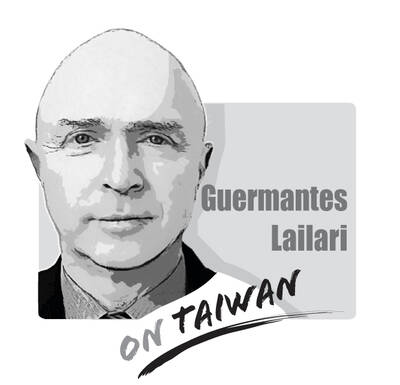US President Donald Trump has announced sweeping “reciprocal tariffs” on US trading partners, ranging from 10 percent to 49 percent, covering industrial products and agricultural products — including a 32 percent tax on agricultural goods from Taiwan that is set to take effect on Wednesday.
The White House said the tariffs aim to address “the injustices of global trade, reshore manufacturing and drive economic growth for the American people.”
However, the policy resembles a machine gun indiscriminately firing.
The method used to calculate the “reciprocal tariffs” involves dividing the US trade deficit by the total value of imports, then halving the figure. Yet in the case of Taiwan, the US has a trade surplus in agricultural products, making the imposition of a 32 percent tariff unjustifiable.
The government should urge the US to treat agricultural products separately from industrial goods in trade calculations. At the very least, it should negotiate a baseline tariff of no more than 10 percent.
The government should also consider imposing 38 percent “reciprocal tariffs” on agricultural products from the US. This rate is derived by taking half of Taiwan’s US$2.89 billion trade deficit with the US and expressing it as a percentage of the US$3.78 billion in total agricultural imports from the US.
The government should also conduct a thorough analysis of Taiwan’s agricultural competitors in the US market — including the tariff rates imposed on their goods, the resulting post-tariff prices and how those compare with Taiwanese products. This would help assess Taiwan’s relative competitiveness and identify areas of potential disadvantage.
The government should also evaluate the demand for Taiwanese agricultural products in the US to determine the price elasticity of market demands and the possibility of transferring the cost of the tariffs to consumers by raising the prices.
If price elasticity is high, there is limited room for price increases. This would have a greater impact on homogenous goods — such as fishery products like tilapia, squid, tuna, dolphinfish and bass — resulting in lower profit margins and export volumes.
In contrast, heterogeneous products tend to have lower price elasticity, allowing for greater flexibility in pricing. As a result, the impact of newly imposed tariffs on these products would be relatively limited.
Consumers are generally willing to pay higher prices for differentiated products such as butterfly orchids and specialty tea leaves, due to their unique and superior qualities. This aligns with the strategy adopted by many Taiwanese businesses — emphasizing value and distinction over price competition.
The new tariffs are likely to have a smaller effect on such differentiated agricultural goods. For example, butterfly orchids are considered secondary goods: their sprouts are cultivated in Taiwan and then exported to greenhouses in the US, where they are grown to full maturity.
In the short term, Taiwan could face a mismatch between domestic production and sales. Therefore, it is essential to closely monitor the proportion of exports relative to total production for affected goods to ensure appropriate countermeasures.
Facing the US’ tariff turmoil, the government and the private sector should conduct proper market research and analysis of their competitors, while engaging in market development.
Taiwan should also leverage its advantages in non-price competitions, such as species, quality, brands and traceability of goods, to bolster its competitiveness in the international market.
Yang Ming-hsien is a professor in the Department of International Business at Feng Chia University.
Translated by Fion Khan
Chinese actor Alan Yu (于朦朧) died after allegedly falling from a building in Beijing on Sept. 11. The actor’s mysterious death was tightly censored on Chinese social media, with discussions and doubts about the incident quickly erased. Even Hong Kong artist Daniel Chan’s (陳曉東) post questioning the truth about the case was automatically deleted, sparking concern among overseas Chinese-speaking communities about the dark culture and severe censorship in China’s entertainment industry. Yu had been under house arrest for days, and forced to drink with the rich and powerful before he died, reports said. He lost his life in this vicious

George Santayana wrote: “Those who cannot remember the past are condemned to repeat it.” This article will help readers avoid repeating mistakes by examining four examples from the civil war between the Chinese Communist Party (CCP) forces and the Republic of China (ROC) forces that involved two city sieges and two island invasions. The city sieges compared are Changchun (May to October 1948) and Beiping (November 1948 to January 1949, renamed Beijing after its capture), and attempts to invade Kinmen (October 1949) and Hainan (April 1950). Comparing and contrasting these examples, we can learn how Taiwan may prevent a war with
A recent trio of opinion articles in this newspaper reflects the growing anxiety surrounding Washington’s reported request for Taiwan to shift up to 50 percent of its semiconductor production abroad — a process likely to take 10 years, even under the most serious and coordinated effort. Simon H. Tang (湯先鈍) issued a sharp warning (“US trade threatens silicon shield,” Oct. 4, page 8), calling the move a threat to Taiwan’s “silicon shield,” which he argues deters aggression by making Taiwan indispensable. On the same day, Hsiao Hsi-huei (蕭錫惠) (“Responding to US semiconductor policy shift,” Oct. 4, page 8) focused on
In South Korea, the medical cosmetic industry is fiercely competitive and prices are low, attracting beauty enthusiasts from Taiwan. However, basic medical risks are often overlooked. While sharing a meal with friends recently, I heard one mention that his daughter would be going to South Korea for a cosmetic skincare procedure. I felt a twinge of unease at the time, but seeing as it was just a casual conversation among friends, I simply reminded him to prioritize safety. I never thought that, not long after, I would actually encounter a patient in my clinic with a similar situation. She had